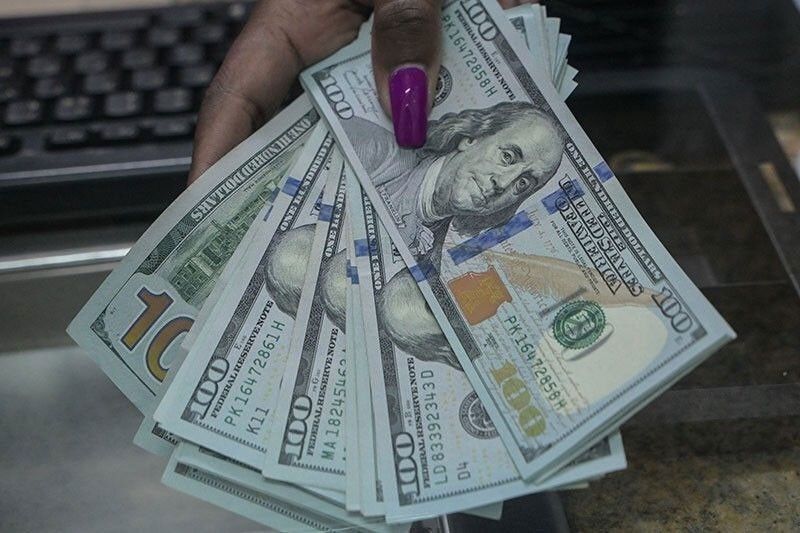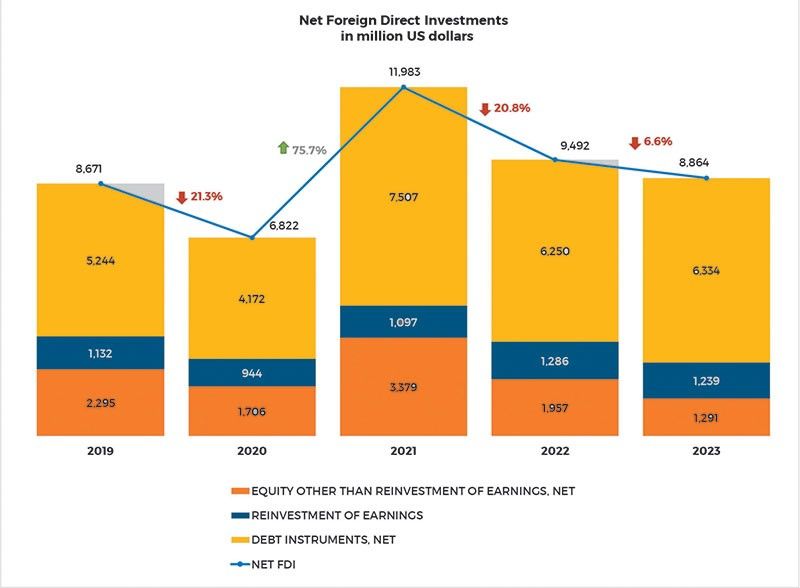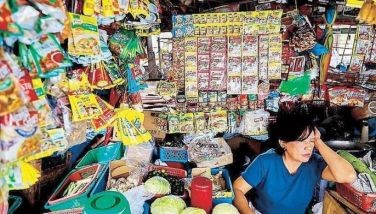FDI inflow slows further in 2023

MANILA, Philippines — The net inflow of foreign direct investments (FDI) fell for a second straight year in 2023, as investors were jittery with the global economic slowdown and geopolitical risks, the Bangko Sentral ng Pilipinas (BSP) said yesterday.
FDI net inflow decreased by 6.6 percent to $8.86 billion in 2023, from $9.49 billion a year ago, according to data released by the BSP.
Despite the decline, the net inflow was slightly higher than the $8-billion target set by the BSP for last year.
“Notwithstanding the country’s sound macroeconomic fundamentals, concerns over subdued global economic growth and geopolitical risks continued to weigh on investors’ investment plans,” the BSP said.
The Philippine economy expanded by 5.6 percent last year, lower than the 7.6 percent in 2022 and the government’s six to seven percent target. Still, the Philippines emerged as one of the fastest-growing economies in the region.
For this year, the Development Budget Coordination Committee is expecting economic growth to rebound to between 6.5 and 7.5 percent.
In December alone, FDI net inflows rose by 29.9 percent to $826 million from $636 million in December 2022, but it marked the lowest in three months or since the $581 million recorded in September 2023.
“A sluggish worldwide economy, rising interest rates in developed countries and geopolitical tensions all contributed to a cautious investment climate,” Security Bank chief economist Robert Dan Roces said.
“Domestic issues like inflation and elevated rates further dampened investor enthusiasm,” he added.

Based on BSP data, reinvestment of earnings declined by 3.6 percent to $1.24 billion in 2023 from $1.29 billion in 2022.
Likewise, equity and investment fund shares dropped by 22 percent to $2.53 billion in 2023 from $3.24 billion previously.
Net equity other than reinvestment of earnings stood at $1.29 billion, 34 percent lower than the $1.96 billion a year ago.
This developed as total equity placements dropped by 16.7 percent to $1.83 billion last year from $2.21 billion in 2022 while withdrawals more than doubled to $547 million from $249 million.
Capital infusions from Japan, the United States, Singapore and Germany were channeled mostly to top sectors such as manufacturing, real estate and financial and insurance.
Meanwhile, investments in debt instruments consisting mainly of intercompany borrowing between foreign direct investors and their subsidiaries or affiliates in the Philippines rose by 1.6 percent to $6.33 billion from the revised $6.25 billion in 2022.
Roces said FDI inflows remain uncertain this year as global headwinds may continue to subdue overall investments into the Philippines.
“However, government efforts to improve the business environment and a focus on promising sectors as well as a broader FDI push may mitigate some of these challenges,” he added.
The BSP raised key policy rates by 450 basis points from May 2022 to October 2023, bringing the benchmark rate to a near 17-year high of 6.5 percent to tame inflation and stabilize the peso.
For this year, the BSP sees the net inflow of direct investments rising to $10 billion.
- Latest
- Trending































